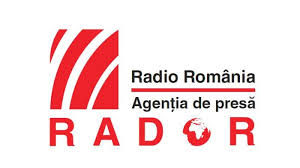Bucharest fire death toll reaches 56, expected to rise
Bucharest fire death toll has reached 56 this morning. The Health Ministry announced yesterday that the death toll was expected to rise over the next days. A young woman aged 18 died in a hospital in Bucharest today. Two other patients with severe burns are hospitalized in the same unit. A total of 50 injured are still receiving care in hospitals across Bucharest, 12 out of them being in critical condition.
40 others have been transferred in hospitals abroad so far. Two of the patients from Romania are currently receiving medical care in the Burn Unit of Tel Hashomer Clinic in Israel. Plastic surgery specialist Dr.Nimrod Farber spoke about their condition yesterday:
Dr. Nimrod Farber: Two patients with severe burns are admitted in our unit. The treatment they received in Romania was excellent, as it has been for all patients in the initial phase. We have re-assessed their condition and proceeded to stabilize their respiratory function, remove necrosis and apply skin grafts. So far, they are both doing well, but of course, this kind of injuries need a long time to heal. Additional surgery is still required as well as infection control. However I am glad to see positive evolution.
Israeli doctors were the first to arrive in Bucharest to provide assistance after the fire. Dr. Farber also speaks about co-operation with Romanian medical teams during an interview in Tel Aviv with Radio Romania’s permanent correspondent Dragoş Ciocîrlan.
Dr. Nimrod Farber is a plastic and reconstructive surgery specialist at the Israeli National Burn Unit in Tel-HaShomer Clinic – The Sheba Medical Center.
Rep (Dragoş Ciocîrlan): Will you please describe this Burn Unit for us?
Dr. Nimrod Farber: This is the National Burn Unit, the Israeli National Burn Unit in The Sheba Medical Center. It is the largest burn unit in Israel and the most specialized; it’s been working for about one year and a half, it’s newly built after long efforts from the management and the Chief of the Burn Unit, Professor Yossi Hayek. This burn unit was built according to the international standards for treating burned patients, it’s comprised of specialized isolation rooms with large windows, the entire front is a window facing the nurses station, they are arranged in a semi-circular fashion so, in the unit, the nurses have a view of every room from every point and we also have other rooms for treating patients with minor burns. Each room is equipped with the most modern equipment, we have specialized monitors, automatic syringes for the antibiotics, monitors for controlling blood pressure and all the treatments the patients are about to receive. All of this monitoring is also seen on specialized screens that are available throughout the unit, so in every point that you’re standing you can see the monitors with the cardiac monitoring and the respiratory signs for every patient in these specialized rooms.
Rep: How was your co-operation with the Romanian medical teams in Bucharest?
Dr. Nimrod Farber: Here at The Sheba Medical Center which is the largest medical center in Israel we have a very, very long tradition and experience with international delegations to assist in the catastrophies, medical catastrophies around the world; So, as soon as we found about the fire in the Colectiv club – I think it was the next day already that the management contacted our colleagues in Romania and offered to assist in any way necessary and we offered, as soon as possible, to send – what we always do – a delegation of specialists to help our colleagues, assess the situation and share our experience with these mass casualties and disasters and especially share our experience of treating severely burned patients.
We came to Romania – myself I am a specialist in plastic surgery and my colleague, dr. Sandu, who is a specialist in Intensive Care and anesthesiologist – she is from Romanian origin and part of her studies she did here at The Sheba Medical Center and now she works here as a specialist – so, we came to Romania and immediately we started visiting the hospitals, we were meeting with both officials and local medical teams, assisting in the operating room, changing dressings and going through the Intensive Care Units (ICUs) and discussing the patients with our Romanian colleagues.
On a professional level, it was very comforting to see that our Romanian colleagues are well-equipped, the ICUs are very well-equipped with most modern equipment and technologies and the local teams are very professional, so we could easily communicate and discuss our experience, share our knowledge and learn from local teams what kind of treatments they’re doing and how are they managing this initial treatment phase after the fire.
From what we could tell, there was a recent programme for advancing or buying equipment, developing the Intensive Care Units across Bucharest and I can tell you that this was very successful because such a mass casualty, such a burn disaster is so overwhelming that is very difficult for any country in the world to deal with, even the most modern country and to see that the primary allocation of the patients was such that all the patients were immediately transferred to the ICU and began treatment, including surgery, infection control and intensive acare was very professional and very comforting to see.
So, the level of the initial treatment was very, very good.
Unfortunately and this I regret to say, the natural course of this severe injury with severe inhalation injury is such that sometimes, no matter how advanced medical treatment is, we expect a very high mortality rate over time. At first, there is the initial mortality rate due to the severe injury, shock and inhalation injury in the early phase, but later on, the patients also suffer infections, multi-organ failure, especially respiratoy failure and we know – our international experience is worldwide experience – these severe inhalation injury cases have terrible prognosis and we know there is a high mortality rate.
Author: Dragoş Ciocîrlan
Audio file transcript: Bianca Ioniţă







